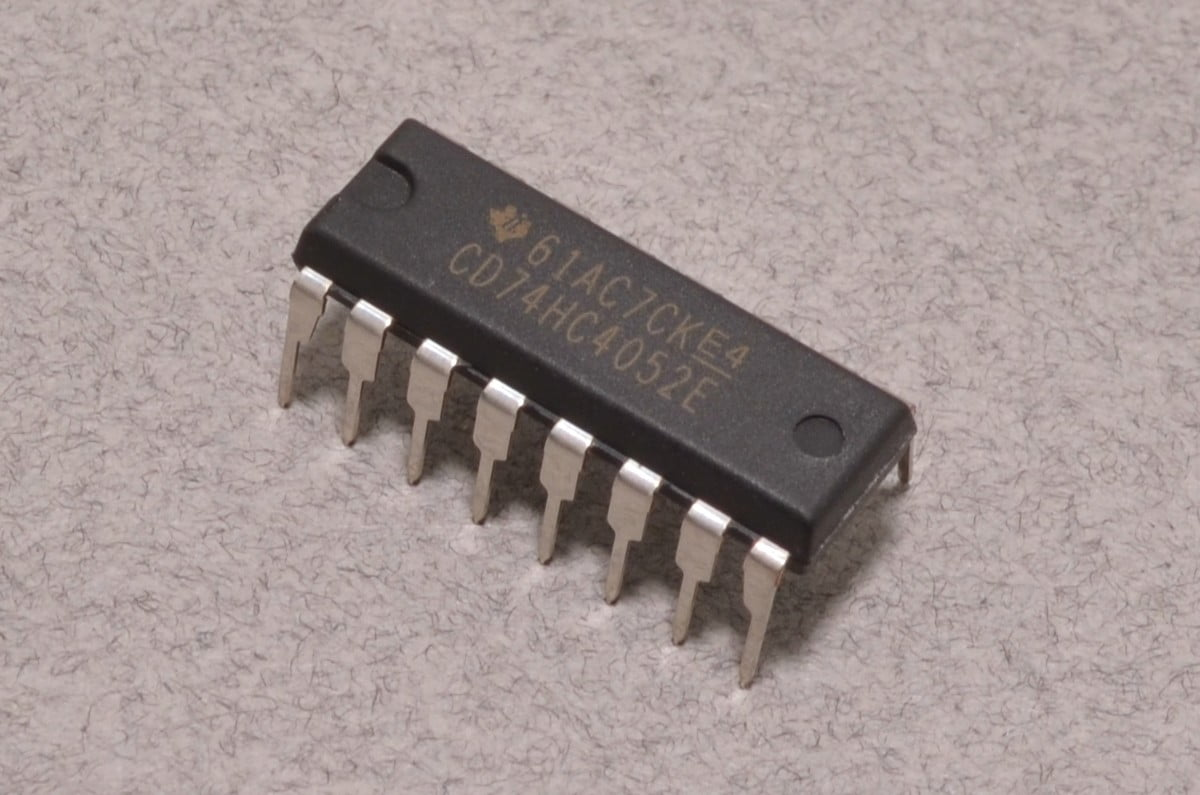Analog Multiplexer/Demultiplexer IC: The Core Engine for Signal Integration and Distribution
I. Introduction to Analog Multiplexer/Demultiplexer IC
Analog Multiplexer/Demultiplexer Integrated Circuits are semiconductor devices used for signal selection and distribution. They can connect one of multiple input signals to a single output line or distribute a single input signal to multiple output lines through a set of control signals. The core function of these ICs is to enable flexible signal switching and routing, thereby optimizing signal transmission paths and reducing the occupation of hardware resources.
 The working principle of multiplexers (MUX) and demultiplexers (Demux) is based on the control of analog switches. A multiplexer activates internal analog switches through control signals to connect the selected input signal to the output terminal. For example, a 4:1 multiplexer has four input pins and one output pin, with two control pins used to select one of the input signals. In contrast, a demultiplexer operates in the opposite way, distributing a single input signal to multiple output pins based on control signals. This working mechanism allows Analog Multiplexer/Demultiplexer ICs to achieve efficient signal management in complex signal processing environments.
The working principle of multiplexers (MUX) and demultiplexers (Demux) is based on the control of analog switches. A multiplexer activates internal analog switches through control signals to connect the selected input signal to the output terminal. For example, a 4:1 multiplexer has four input pins and one output pin, with two control pins used to select one of the input signals. In contrast, a demultiplexer operates in the opposite way, distributing a single input signal to multiple output pins based on control signals. This working mechanism allows Analog Multiplexer/Demultiplexer ICs to achieve efficient signal management in complex signal processing environments.
The main features of Analog Multiplexer/Demultiplexer ICs include low on-resistance, fast switching time, high bandwidth, low crosstalk, and high isolation. Low on-resistance minimizes signal loss during transmission, ensuring signal integrity. Fast switching time guarantees that signals can be switched from one input to another in a short period, meeting the demands of high-speed signal processing. High bandwidth supports the transmission of high-frequency signals, making them suitable for various applications. Low crosstalk and high isolation ensure signal separation, reducing noise interference and enhancing system stability.
These characteristics enable Analog Multiplexer/Demultiplexer ICs to excel in a variety of applications. For instance, in video signal switching, they ensure the transmission and switching of high-definition video signals, maintaining signal integrity and stability. In audio signal processing, they are used to select and distribute different audio signals, enhancing the flexibility of audio systems. In communication systems, they are employed for signal routing and distribution, optimizing communication links. In data acquisition systems, they select different sensor signals, improving the efficiency of data acquisition.
II. Popular Models from Leading Manufacturers
Many renowned manufacturers offer high-quality Analog Multiplexer/Demultiplexer ICs, each with distinct performance and application characteristics. The following table compares some popular models:
Manufacturer | Model | Channels | On-resistance (Ω) | Supply Voltage (V) | Package | Typical Applications |
8:1 | 35 | 1.8-5.5 | QFN-16 | Test and measurement, medical devices | ||
4:1 | 10 | 1.65-5.5 | SC70-6 | Portable devices, consumer electronics | ||
8:1 | 80 | 2-6 | SOIC-16 | Industrial control, communication systems | ||
4:1 | 25 | 2.7-5.5 | TSSOP-14 | Audio signal switching, sensor interfaces |
These models cover a range of applications from low to high channel counts, meeting the diverse signal processing needs from simple to complex systems.
III. Latest Developments and Technical Trends
With the continuous advancement of electronic technology, Analog Multiplexer/Demultiplexer ICs are also evolving. Current trends are primarily focused on high-speed signal processing, low-power design, high integration, and crosstalk suppression.
● High-Speed Signal Processing: As the demand for communication and data processing increases, the switching speed and bandwidth of multiplexer/demultiplexer ICs are constantly improving. For example, the latest multiplexers can support signal rates as high as 8Gbps.
● Low-Power Design: In battery-powered and portable devices, low-power design has become a key trend. By optimizing circuit design and adopting advanced manufacturing processes, the power consumption of multiplexer/demultiplexer ICs is continuously reduced. For instance, Renesas' multiplexers perform exceptionally well in low-power mode.
● High Integration: To meet the needs of complex systems, the integration level of multiplexer/demultiplexer ICs is constantly increasing, supporting more channels and functions. For example, some new models of multiplexers integrate multiple functional modules, enabling a variety of signal processing tasks on a single chip.
● Crosstalk Suppression Technology: By optimizing circuit design and employing advanced compensation techniques, crosstalk issues have been effectively mitigated. For example, some new models of multiplexers significantly enhance crosstalk suppression performance during high-frequency signal transmission, ensuring signal purity and system stability.
IV. Conclusion
Analog Multiplexer/Demultiplexer ICs play a vital role in modern electronic systems. Their fast switching, low power consumption, and high integration make them highly effective in a wide range of applications. As technology continues to advance, these ICs will offer even higher performance and lower power consumption, providing stronger support for the development of electronic systems. Whether it is the transmission of high-definition video signals, processing of audio signals, or signal routing in complex communication systems, Analog Multiplexer/Demultiplexer ICs will continue to play an irreplaceable role, driving the continuous development of electronic technology.
Website: www.conevoelec.com
Email: info@conevoelec.com








